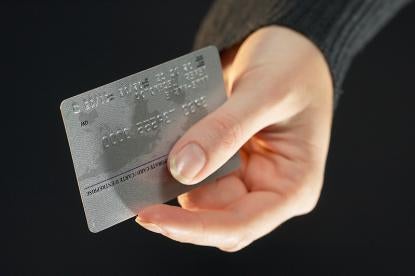Nearly two years have passed since the Consumer Financial Protection Bureau (CFPB) issued its proposed rule with respect to prepaid financial products, but on October 5, the CFPB released its final rule to amend Regulations E and Z and extend their coverage to certain prepaid financial products (the Rule). The significance of the Rule cannot be overstated, largely because of its scope – it applies to prepaid cards bought at your local convenience store as well as prepaid accounts that are used entirely online, such as digital wallet accounts. Below we briefly review (because the Rule and its preamble are almost 1700 pages!) some of the major components of the rule, for which compliance is required beginning October 1, 2017.
Prepaid Accounts
The Rule defines a “prepaid account” to specifically include payroll card accounts and government benefit accounts that are currently subject to Regulation E. Prepaid accounts also include:
-
Accounts that are marketed or labeled as “prepaid” that are redeemable upon presentation at multiple, unaffiliated merchants for goods or services, or that are usable at [ATMs]; or
-
Accounts that are:
-
Issued on a prepaid basis or capable of being loaded with funds;
-
Whose primary function is to conduct transactions with multiple, unaffiliated merchants for goods or services, or at ATMs, or to conduct person-to person (P2P) transfers; and
-
Are not checking accounts, share draft accounts, or negotiable order of withdrawal (NOW) accounts.[1]
Since the term “prepaid account” is added to the definition of “account” under Regulation E, it is important to recall that Regulation E covers only those accounts that are used primarily for personal, family or household purposes. The CFPB also reminds us that this definition of “prepaid account” is not limited to general purpose reloadable cards or prepaid products that operate as alternatives to traditional transaction accounts. Therefore, this Rule and its definition of “prepaid account” is intended to be read broadly.
Tailored Requirements
Once an institution discovers that it, or perhaps an affiliate or business partner, offers a “prepaid account,” the next inquiry is whether there any special rules for these accounts. And, if so, what are the new rules? Well, as you might imagine, the answer to the first question is yes, there are special requirements for these accounts. Furthermore, as you can imagine in the consumer protection context of Regulations E and Z, the rules focus on disclosures, error resolution, liability and periodic statements. The Rule outlines a set of pre-acquisition disclosures that must generally be provided to the consumer before the consumer acquires the prepaid account. Such disclosures focus intensely on fees and key information about the account itself.
Error resolution requirements and limits on liability are similar to the existing Regulation E requirements on those topics, but the Rule extends these requirements to all prepaid accounts, regardless of whether the institution has completed the customer identification and verification process. Generally, the Rule also requires institutions to provide periodic statements for prepaid accounts; however, the rule permits an alternative to the periodic statement if the institution provides the consumer with:
-
Account balance information (by telephone);
-
Electronic account transaction histories; and
-
Written account transaction histories (upon request).
Among other information required on these periodic statements and transaction histories is a summary total of all fees assessed by the financial institution against the account.
Hybrid Prepaid-Credit Cards
Lastly, newly defined “hybrid prepaid-credit cards” are added to Regulation Z and will generally be treated as a credit card for compliance purposes, with some additional specific requirements. Under the Rule, a prepaid card will be a hybrid prepaid-credit card if:
-
The card can be used from time to time to access credit from a credit account that is separate from the prepaid account’s asset feature (i.e., a separate credit feature);
-
The separate credit feature is offered by the prepaid account issuer, its affiliate, or its business partner; and
-
The card can be used to access the separate credit feature in the course of authorizing, settling or otherwise completing transactions conducted with the card to obtain goods or services, cash, or to conduct P2P transfers.
A prepaid card may also be a hybrid prepaid-credit card if it is a single device that can be used to access credit through a negative balance on the prepaid account’s asset feature, with some exceptions.
Extending the consumer protections and disclosure requirements of Regulations E and Z to prepaid accounts is a significant development for providers of prepaid financial products. For assistance in understanding the contours of the new rules and to gear up for compliance by October 1, 2017, please contact Joseph Silvia or any attorney in our Financial Institutions Group.
[1] See the final rule at www.consumerfinance.gov/prepaid-rule (not yet published in the Federal Register).


 i
i


